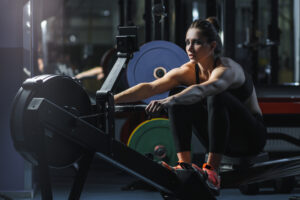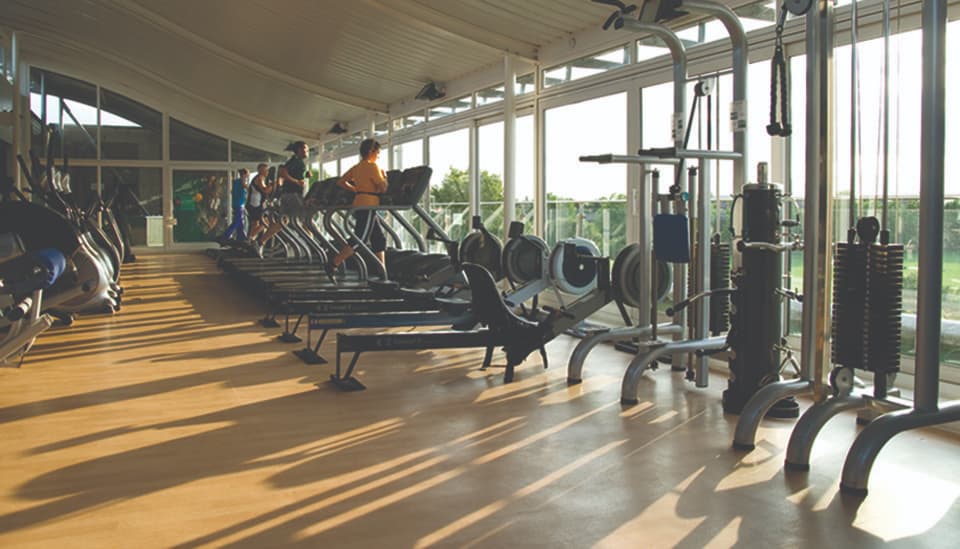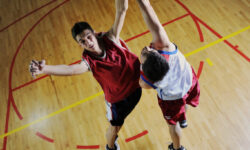
What exercise can you think of that works nine major muscle groups and gives you a great cardio workout? The answer is rowing and, in addition to being a great source of overall fitness, rowing is also perfect for all ability levels.
I am talking about indoor rowing obviously, to go out on the water takes a little more training, knowledge and accessibility to water, but indoor rowing, now that’s a different matter.
Why indoor rowing?
The first reason is that anyone can do it. There is no upper or lower age limit on indoor rowing. The basics of indoor rowing can be learnt in 10 minutes, one of the gym instructors in the Outlooks Gym will willingly show you how to use the rowing machines and its settings.
The benefits
Low impact
Rowing doesn’t put pressure or force through the joints in the way that running or circuit training does and you can adjust the rowing machine settings for resistance to suit the fitness levels of the individual. For those who are overweight, the sliding seat displaces the weight so the load on the body is less.
Total workout
Nine muscle groups get a workout during a rowing session. The quadriceps, hamstrings, gluteals, lats, core, shoulders, triceps, back and biceps all get a workout. And the rowing action means these are smooth movements, less likely to cause injury than the more ‘jerky’ motions associated with other fitness methods.
Take control
With a rowing machine, you can take control of the resistance you use, the distance you row and the speed you travel at.
Easy to measure
Rowing machines have monitors showing total time rowed, distance achieved, calories and pace. This allows you to monitor progress – a strong motivational factor.
Rowing training
If you think indoor rowing could be the activity to boost your fitness this Autumn, then consider these three training programmes.
Short, sharp session
Warm up with a gentle five minute row.
Row twenty 30 seconds all-out bursts with 30 seconds of light rowing between each rep.
Cool down with a gentle five minute row.
Medium distance
Row a total of 5,000 metres with a change in stroke rate every 500 metres.
For example: 500 metres @22spm, 500m @26spm, 500m @28spm, 500m @30spm, 500m @32spm, 500 metres @34som, 500m @32spm, 500m @30spm, 500m @28spm, 500m @26spm.
(For the slower stroke rate, this might seem too easy at first, but the discipline in learning to row at a set rate is good mental training and also allows you to really concentrate on technique.)
Long distance
Row four times 2,000 metres, with a three minute light row between each repetition.
These workouts are for all abilities and so do not specify a pace, power or heart rate zone. Whatever your fitness level, you should be working at a pace that is tough but not so tough that you cannot finish the session. During the easy/light recovery phase you should be able to easily hold a conversation.
Get the technique correct
With any exercise, technique is all important. In rowing, it is vital that you get the technique correct before you start piling on the training demands. Here is guidance from indoor rowing specialist manufacturers Concept2
The Rowing Stroke
The Catch
• Arms are straight; head is neutral; shoulders are level and not hunched.
• Upper body is leaning forward from the hips with the shoulders
• in front of the hips.
• Shins are vertical, or as close to vertical as is comfortable for you. Shins should not move beyond perpendicular.
• Heels may lift as needed.
The Drive
• Start the drive by pressing with your legs, and then swing the back through the vertical position before finally adding the arm pull.
• Hands move in a straight line to and from the flywheel.
• Shoulders remain low and relaxed.
The Finish
• Upper body is leaning back slightly, using good support from
• the core muscles.
• Legs are extended and handle is held lightly below your ribs.
• Shoulders should be low with wrists and grip relaxed. Wrists should be flat.
The Recovery
• Extend your arms until they straighten before leaning from the hips towards the flywheel.
• Once your hands have cleared your knees, allow your knees to bend and gradually slide the seat forward on the monorail.
• For your next stroke, return to the catch position with shoulders relaxed and shins vertical.
Once you have mastered the technique, you will find rowing a great way to improve fitness, shape and tone your body or get fit for your next big challenge.








